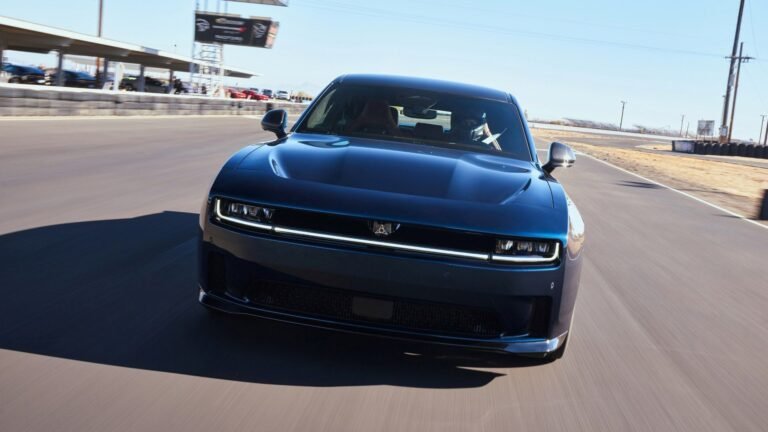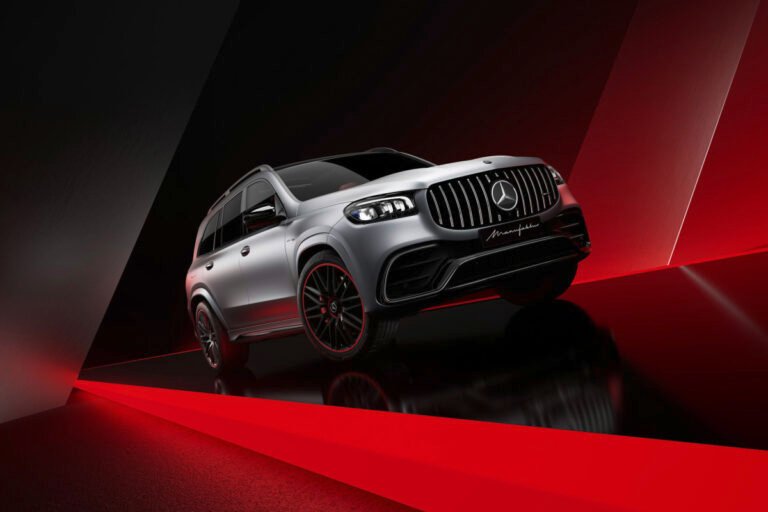

Over the past couple of years, you’ve probably watched and read journalists and owners alike way lyrical about the FL5-gen Civic Type R, with many proclaiming it to be the greatest hot hatch ever built. And this is as high a praise as Honda can get in this extremely competitive segment.
However, up until recently, the latest and supposedly greatest Civic Type R had escaped our grasp. That is until we had the pleasure of living with one for two weeks, providing us with plenty of time to discover the ins and outs of it and see if it really is as good as everyone claims.
Review: 2019 Honda Civic Type R Does What No Other Hot Hatch Can
It’s no secret that, if there’s one carmaker that can push the hot hatch envelop to new levels, it’s Honda. Over the last 30 years, its Type R-branded models have been lauded for their crisp handling, raging four-cylinder powertrains, and track prowess that have forced rival brands to up their game, thus improving the class as a whole.
QUICK FACTS
SWIPE
Photos Brad Anderson/Carscoops
If Looks Could Kill
There’s no doubt Honda lifted the game with the FK8 Civic Type R. With the exception of the short-lived FK2 model that was only built for a few select markets, the FK8 was the first Civic Type R to adopt a turbocharged 2.0-liter four-cylinder rather than a high-revving naturally aspirated engine. It was brilliant, but the design was very controversial.
The brand has learned its lesson with the new car. The 11th-gen Civic looks much more refined than the old model, and this is carried through to the flagship Type R. It still looks aggressive, but it’s far more stylish. At the back there’s a big wing, as you’d expect, but the rear just looks slightly more mature.
Up front, it’s the same story. Honda has managed to delicately refine some of the lines and shapes, while still maintaining an obvious sense of aggressiveness that makes it clear that this is not your dad’s or granny’s Civic.

Beneath the skin, the FL5 Civic Type R shares a lot in common with the old car. It’s based on the same basic chassis and uses the same turbocharged 2.0-liter four-cylinder and six-speed manual transmission. This is no slight at Honda, as the underpinnings of the old car did the job nicely, thank you.
While the looks of the car are much more agreeable than its predecessor’s, its price has been a matter of controversy since its launch. In Australia, it starts at AU$72,600 (~$47,400), which is roughly AU$13,000 (~$8,500) more than the old car. In the US, prices start at just a touch under $47,000, which is a whole lotta money for a Honda. This ain’t no badge snobbery – it’s just that, for the money, most buyers expect a posh badge to come with the rest of the package.
Photos Brad Anderson/Carscoops
A Premium Cabin
However, the price hike starts to make sense the moment you step inside the cabin of the Civic Type R. Not only does it have the best interior of any Civic ever, but it’s one of the classier cabins of any hot hatch.
Like the regular Civic, the Type R sports a more minimalistic dashboard with honeycomb-patterned air vents and physical controls for the HVAC system. There’s αλσο a 9.0-inch infotainment screen, a new 10.2-inch digital instrument cluster, and a perfectly-sized steering wheel trimmed in Alcantara.

Elsewhere, much of the dash and door panels are made from soft-touch materials, adding to the premium feeling of the cabin. No doubt the centerpiece, though, are the front seats. Trimmed in bright red Alcantara, they may not be the Recaros you’ll find in some of the finer Hondas of yesteryear, but they are nonetheless superb. Few seats on the market offer the same combination of comfort and sportiness as those of the Type R. The bases are nice and soft and the bolsters are big, holding you in place through corners. Complementing the seats is red carpeting; I just wish the rear seats were also red rather than black.
Speaking of the rear seats, the Civic Type R is, despite its size, actually a four-seater. That’s right, there’s no center seat at the rear, just a couple of cupholders. Although we suspect there aren’t many who will be ferrying around four passengers in their Type R daily, it’s something interested shoppers should consider.
Photos Brad Anderson/Carscoops
Honda’s infotainment system remains quite basic compared to some of the competition, but it does the job. It includes Apple CarPlay and Android Auto but they need to be connected through an outdated USB-A port. A new feature of the FL5 model is Honda’s LogR track data logger. It displays all important vehicle metrics, including turbo pressure, oil temperature, coolant temperature, and a G-meter.
The digital gauge cluster offers a good amount of customization. Honda has even added a string of rev lights above the screen, adding to the race car-feel of the Type R.
Cargo space is excellent. There is 410 liters (14.4 cubic feet) or space or 1,212 liters (42.8 cubic feet) with the rear seats folded down.

The Best Of FWD
Aussie-delivered Civic Type Rs pump out an impressive 315 hp (235 kW) and 310 lb-ft (420 Nm) and the car feels every bit as quick as those figures would suggest. It’ll run to 100 km/h (62 mph) in just 5.4 seconds and continue through to a claimed top speed of 275 km/h (171 mph). While we obviously couldn’t verify that top speed, we can confirm it accelerates just as hard as Honda says it will.
However, in our testing, it was no quicker at a roll than a Hyundai i30 N with its 276 hp (206 kW) and 289 lb-ft (392 Nm). That’s probably because Hyundai has long underquoted just how much grunt the N actually has.
Photos Brad Anderson/Carscoops
Much like the FK8, the latest Civic Type R feels like a more serious performance tool than some of its rivals, rather than one necessarily designed to provide the most giggles behind the wheel. As such, it misses out a theatrical exhaust like an i30 N, Golf GTI, or Megane RS, nor does the engine itself produce much sound at all. Indeed, Honda has piped in some fake engine sounds and annoyingly, it can’t be turned off, and only turned down in ‘Comfort’ mode. With a new intake and exhaust, I’m sure the Honda could feel that little more exciting.
Read: Honda’s Considering An Electric Type R, But Should It?
The driving experience is hard to fault. This Type R has the single best shifting feel of any hot hatch, by far – only a manual Porsche 911 GT3 can come close to match it. The weighting is perfect, it’s beautifully precise, and the metal shift knob is brilliant.
Like other performance cars, the Civic Type R also rocks a superb automatic rev-matching function. It works faultlessly. My only gripe is that this feature can only be disabled by diving into the driver assistance settings and isn’t operated by a single button like some rivals. What’s more, the driver assistance settings menu can only be accessed when you’re at a standstill.

Another area of the driving experience where the Type R is ahead of all of its rivals is steering feel. I have no idea what kind of wizardry Honda’s engineers performed when calibrating the steering, but they’ve absolutely aced it. When left in Comfort mode, it feels telepathic and it’s easy to discern what the front wheels are up to at any given moment.
While I loved the FK8 Civic Type R, one function it was desperately missing was any kind of custom mode to adjust individual settings. Honda has solved this with the new Type R. The car includes a configurable ‘Individual’ mode where you can adjust the engine, steering, suspension, engine sound, rev matching, and gauge cluster. However, as mentioned, the fake engine sound and rev matching can’t be switched off through here.
For perfectly smooth roads, keen drivers would be wise to switch into +R mode. It turns everything up to its keenest and most aggressive setting, but makes the steering too heavy and the suspension a little too soft. As such, I drove primarily in my preferred Individual mode with the steering and suspension in their Comfort settings.
Photos Brad Anderson/Carscoops
The Honda’s engine needs to be revved over 3,500 rpm, as below that there’s hardly any power on offer at all. Build the revs, however, and the car surges forward without a hint of torque steer. Honda’s Dual Axis struts work wonders in eliminating this all-too-common trait of power front-wheel drive hot hatches.
Meanwhile, the limited-slip differential hooks into the road, and flings you into corners without a worry in the world. I have no doubt the Civic Type R can corner harder some some all-wheel drive rivals. This is no doubt helped by the fact it comes standard with chunky 265-section Michelin Pilot Sport 4 S front and rear tires, whereas most of its rivals have to make do with 225 mm or 235 mm tires.
The downside of these chunky tires is that the Honda does produce quite a lot of road noise, particularly on coarse highways, with which we spent a lot of time on while reviewing the Civic Type R.

Verdict
Going into my time with the car, I knew it would be good and capable of speeding up a mountain pass as quickly as pretty much anything else on four wheels. What I didn’t expect is how comfortable it would be as a daily driver. Adaptive shocks come standard on the car, and left in their Comfort mode, the car soaks up bumps and imperfections in the road beautifully.
Then there’s the all-important question of all: Is the Civic Type R more fun to drive than some of its rivals? Despite all its charisma, I really don’t think so. Cars like the Hyundai i30 N and Toyota’s GR Yaris and GR Corolla are more boisterous than the Honda, with the i30 N clearly more focused on thrills than the Type R, albeit at the expense of outright performance and lap times. The GR models are perhaps a happy middle ground between the two. But for those in the market for the ultimate front-wheel drive hot hatch, the Type R is the obvious choice.
Photos Brad Anderson/Carscoops



